What Does Diversity, Equity, & Inclusion Mean?
Transcript:
What Does Diversity, Equity, & Inclusion Mean?
Today we will answer that question adding more insight.
Diversity, equity and inclusion is often referred to its acronym DEI.
Specifically, diversity is assuring there is a mix of people from diverse backgrounds and experiences included in an organization or group.
Equity is ensuring all people have the same opportunities and access to resources, no matter their race, color, creed, national origin, sexual orientation, disability or beliefs.
Where inclusion breaks down barriers so all people feel welcome, involved and valued.
Pros and cons refer to the positives and negatives of a situation.
Pros are the advantages or benefits of something, while cons are the disadvantages or drawbacks.
Positive outcomes, also known as pros, are the advantages or benefits which can help create a more diverse and inclusive environment for all employees.
This can lead to a more positive workplace culture overall and can also help to attract and retain top talent.
D E I can help to promote better communication and understanding between employees of different backgrounds.
This can help to prevent misunderstandings and conflict, and can ultimately lead to a more productive and cohesive work environment.
D E I is important because there is a mix of people from diverse backgrounds bringing different perspectives and skills to the table, which can make organizations more creative and innovative.
When everyone feels welcome and valued, they are more likely to be engaged and productive.
However, there is a growing body of research that suggests organizations focusing on D E I can actually have a negative impact.
This is also known as cons. An argument against something is better known as cons.
In this case, the major con is a decreased focus on merit.
For example, when organizations focus on D E I, they may inadvertently send a message that merit is less important than factors like race or gender.
This can lead to a decline in standards and the feeling among employees that they are not being judged on their merits.
When employees feel that they are being included only because of their race or gender, they may feel tokenized and be valued.
This can lead to a decrease in motivation and engagement by all employees.
When employees feel that they are being held to different standards than their colleagues, they may feel that they are being judged unfairly.
This can lead to a decrease in trust and an increase in tension and conflict.
When organizations focus on DEI, they may inadvertently exclude qualified candidates who do not fit the desired demographic profile.
What is the difference between DEI and racism?
Some say there is a huge difference between D E I and racism, where diversity, equity and inclusion are about creating an environment where everyone feels valued, respected and can reach their full potential.
Racism can include discrimination based on various classifications or beliefs such as:
• Ethnicity or cultural background
• Religion or belief system
• Gender or sex
• Age
• Disability or perceived disability
• Socioeconomic status or class
• Political affiliation or ideology
• Language or accent
• Physical appearance or features
Today we learned diversity, equity and inclusion are important for a diverse workforce, essential for innovation, creativity and for meeting the needs of a global economy.
However, it is important to note that the concepts of D E I are not mutually exclusive and must include merit for performance.
This concludes our diversity, equity, and inclusion lesson.
Until next time, make it a goal to learn something new daily.
-
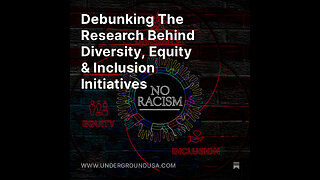 0:53
0:53
UndergroundUSA
2 months agoDebunking The Research Behind Diversity, Equity & Inclusion Initiatives
9 -
 1:54
1:54
IowaRaw
1 year agoDiversity, Equity, & Inclusion Activist – TURN IT OFF!
209 -
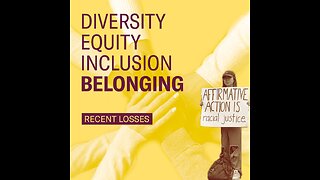 39:08
39:08
PropheticEye
5 months agoDiversity, Equity and Inclusion: ELUCIDATION of These CONCEPTS
26 -
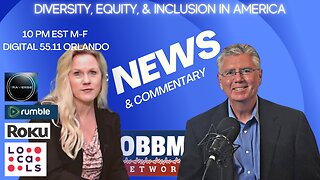 29:04
29:04
OBBM Network Weekly News
1 year agoDiversity, Equity, & Inclusion in The News - OBBM Network News
242 -
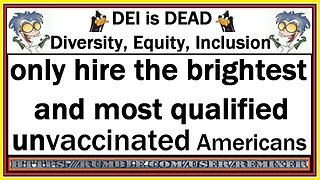 0:44
0:44
Remixer
1 year agoDiversity, Equity, Inclusion
39 -
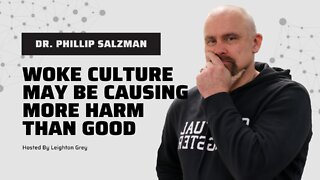 2:15:46
2:15:46
The Grey Matter Podcast
1 year agoCan Diversity, Equity, & Inclusion cause more harm than good? Dr. Phillip Salzman explains...
851 -
 2:43:28
2:43:28
Acousticality
1 year agoThe "Diversity, Equity & Inclusion" Agenda IS INFESTING the USA!
1142 -
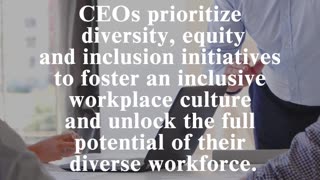 0:43
0:43
The365CEO
4 months agoCEO Executive Leadership: Diversity, Equity & Inclusion
8 -
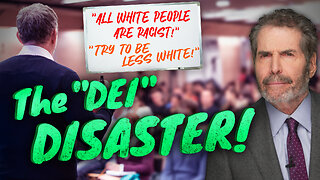 8:06
8:06
John Stossel
1 year agoDiversity, Equity & Inclusion: DEI Training’s Unintended Consequences
12.1K70 -
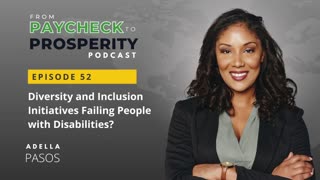 3:27
3:27
Successful Business Ideas
6 months agoDiversity and Inclusion Failing People with Disabilities?
19